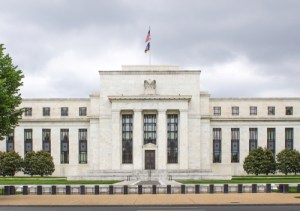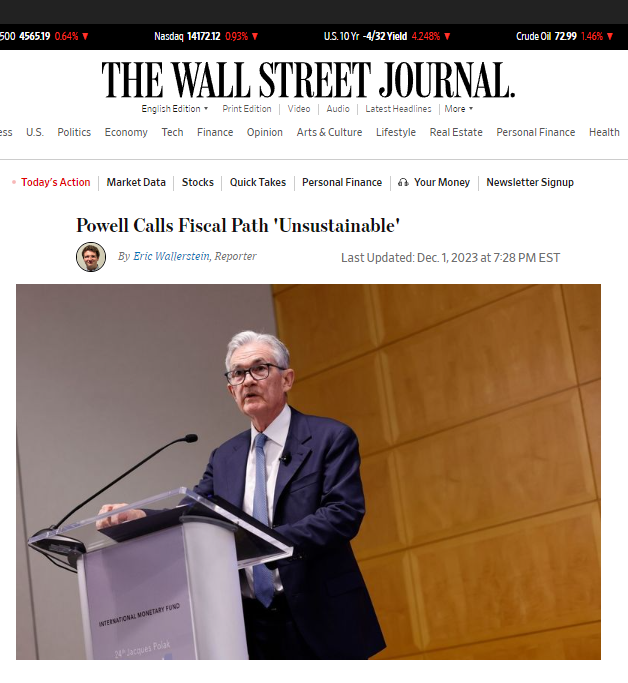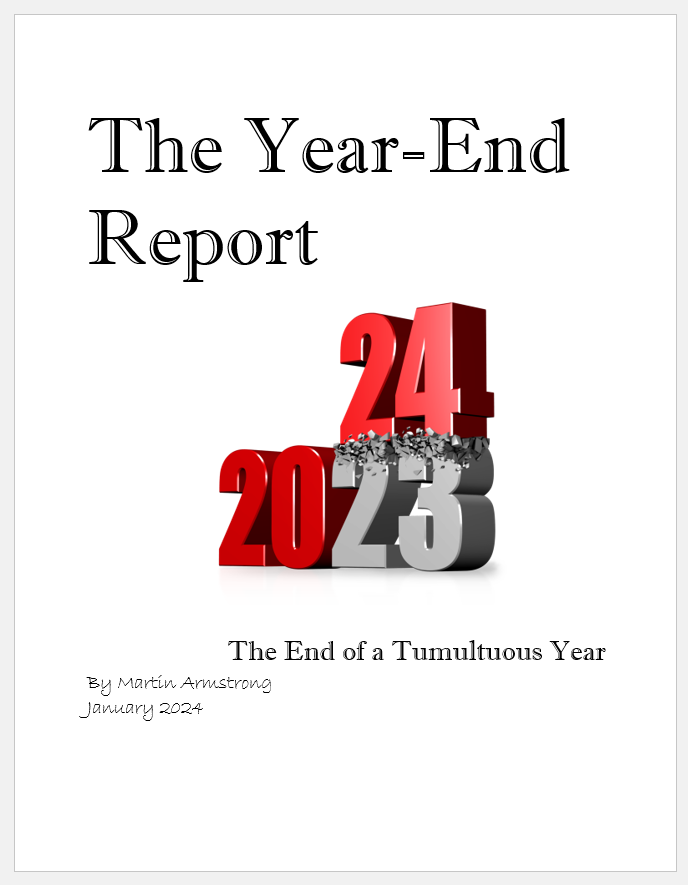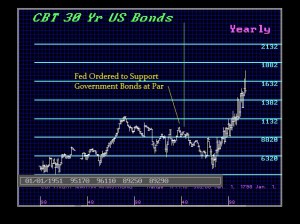What Will the Fed do in 2024?
Everyone wants to know what the Federal Reserve will do in 2024. Of course, people want to believe that the Fed will slash interest rates in the New Year. The pundits cling to every word except when, at the start of the month of December, Powell boldly criticized the Biden Administration, saying that his outrageous spending is “unsustainable” and central banks do not criticize their governments. They certainly do not criticize each other. I have met with the boards of central banks worldwide because I understand their predicament. Unless you have been behind those closed doors, you will never comprehend the intricacies that are taking place.
 The Federal Open Market Committee (FOMC) held rates at the 5.25% to 5.5% range at their last meeting in December 2023. Additionally, the committee indicated the possibility of at least three rate cuts in 2024, as their favored gauges for inflation appear to be easing. The “dot plot,” which reflects individual members’ expectations, suggests the potential for four rate cuts in 2025 and three more in 2026, bringing the rate down to between 2% and 2.25%. Now, that is simply what the public has been led to believe.
The Federal Open Market Committee (FOMC) held rates at the 5.25% to 5.5% range at their last meeting in December 2023. Additionally, the committee indicated the possibility of at least three rate cuts in 2024, as their favored gauges for inflation appear to be easing. The “dot plot,” which reflects individual members’ expectations, suggests the potential for four rate cuts in 2025 and three more in 2026, bringing the rate down to between 2% and 2.25%. Now, that is simply what the public has been led to believe.
The Fed’s last decision reflects a cautious approach to policy tightening, considering multiple factors unknown to the public before any further adjustments. The committee’s PUBLIC decision and future outlook are based on the evolving economic conditions in relation to inflation and the labor market.
The Federal Open Market Committee will meet in 2024 as follows:
- Jan. 30-31
- Mar. 19-20
- Apr. 30 – May 1
- Jun. 11-12
- Jul. 30-31
- Sept. 17-18
- Nov. 6-7
- Dec. 17-18
There are simply things I cannot publish on the public blog. I have posted articles on the Socrates private blog that explain the Fed’s direction for 2024 in further detail. Now, consider the dates above and consider what events align with them. Further details will be provided in the Year-End Report, which should be out by the end of this week.
The Federal Reserve cannot criticize the federal government. The most significant issues facing our economy are simply out of the Fed’s hands: war, taxation, and government spending. Chairman Jerome Powell surprised everyone when he called current government spending “unsustainable.” While not a direct criticism, Powell issued a stark warning that aligns with our Revolution Cycle of 72 years. In 1951, the central bank defied the US government by refusing to purchase debt to prevent rate hikes amid the Korean War.
So, there is bad news for the perpetual bulls who insist rates must decline. There is a HUGE divergence unfolding between short and long-term rates. Institutions are buying up government debt without considering the potential that rates may not fall. Absolutely no one is factoring in the largest driver of inflation – WAR – nor are they factoring in the three main pillars of government debauchery (war, taxation, government spending) that the Fed cannot control.



